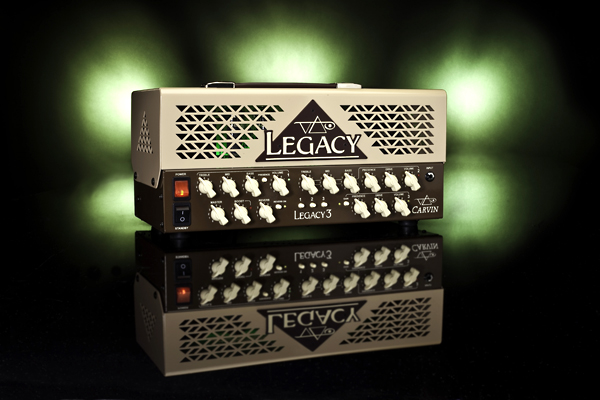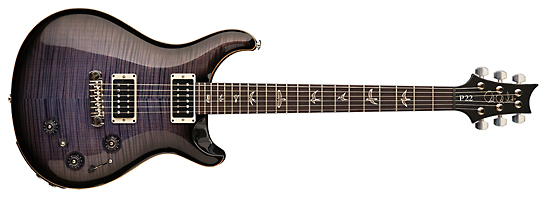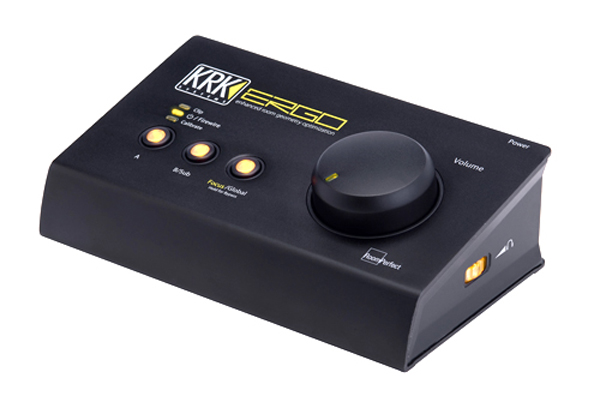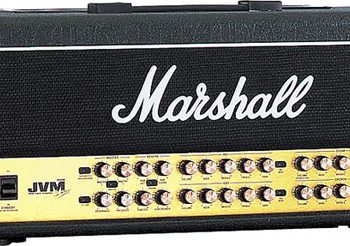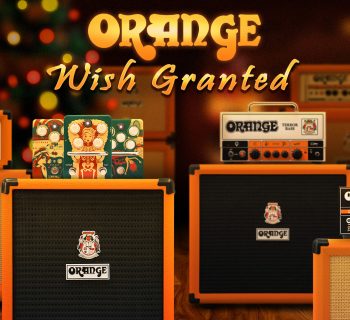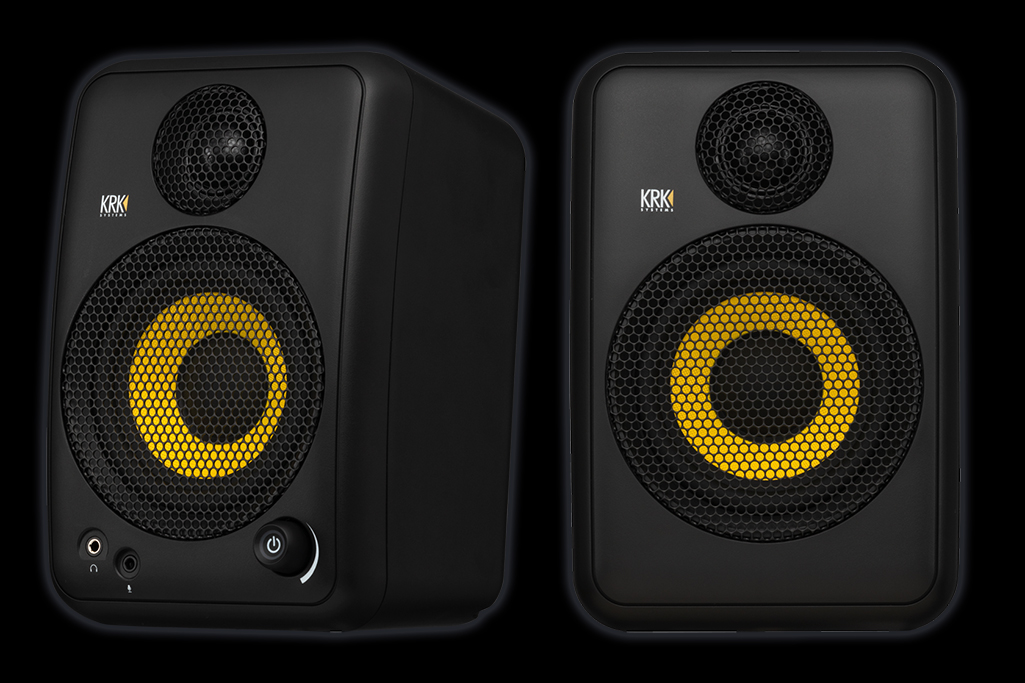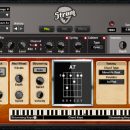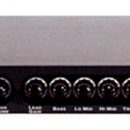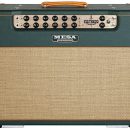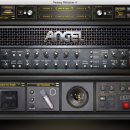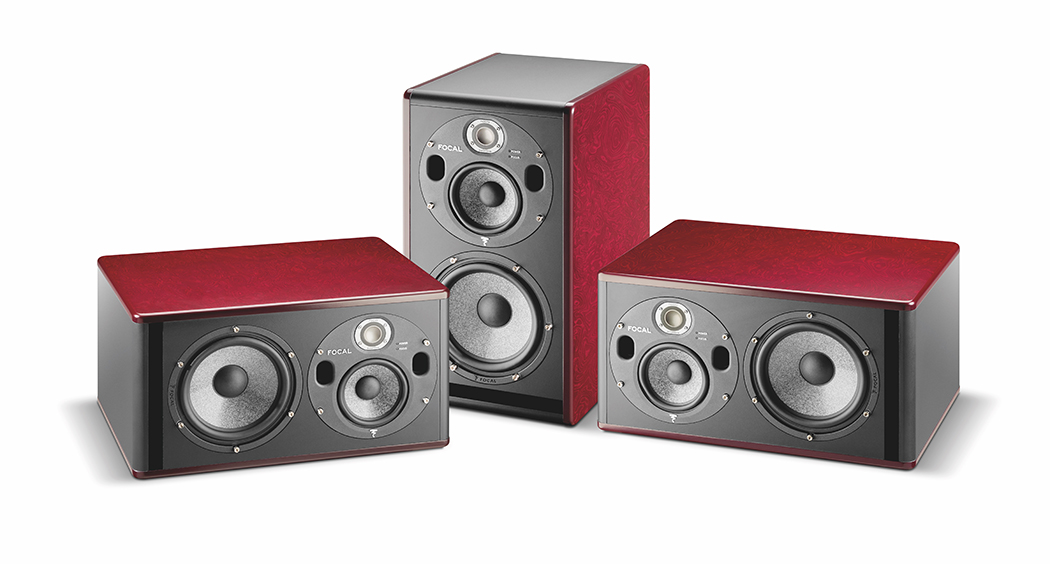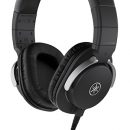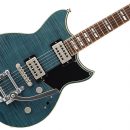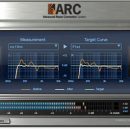 Steve Vai’s signature amplifier has been a popular head in the Carvin amp lineup for many years, and the third edition, Legacy III, has taken an already versatile amplifier and made it even better.
Steve Vai’s signature amplifier has been a popular head in the Carvin amp lineup for many years, and the third edition, Legacy III, has taken an already versatile amplifier and made it even better.
Channels 1 and 2 are unchanged from the original Legacy, but a third channel has been added to the amp, along with a new high-gain option for this channel. For players unfamiliar with the sound of this amp, the Legacy III features a nice array of vintage sounding American and British tones well suited to a variety of players in the hard rock, metal, and blues genres.
| Category | Value | Rating |
| Features | 20% | |
| Usability | 25% | |
| Sound | 25% | |
| Documentation & Support | 10% | |
| Price | 20% | |
| OVERALL RATING =3.7, which earns it a WIHO Award! 3.6 stars or better: Outstanding, WIHO Award 3 stars or better: Worth considering 2 stars or better: Suited to specific needs 1 star or less: Not recommended |
||
The Legacy III is a lunchbox-sized amp, and it’s easily the lightest 100 Watt, all-tube, head we’ve ever had the pleasure of gigging with — only 29 pounds! It’s even rack mountable with an optional kit. And if that’s not cool enough, the head has built-in MIDI control, so you can integrate it into a complex rig without adding a single measure of complexity. Don’t worry, though. The “old-schoolers” among you will be served quite well by the capable footswitch.
Features
The VL300 is a three-channel head featuring four 12AX7 preamp tubes and four EL34 power tubes (a matched set from PM Guitar Tubes, specifically). It can operate at 100 Watts, 50 Watts, or 15 Watts, selectable via a switch on the rear of the amp.
The design is decidedly retro in appearance. Our review unit came dressed brown on brown, but Seafoam Green… err, we mean Vai Green, is also an option. Between the colors and the retro knobs, you do get a somewhat deceiving package, but mostly it’s the size and weight that fool you into thinking this thing won’t really deliver a big and heavy sound.
Other features include a clean boost (user adjustable, up to 6dB), digital reverb, and a series effects loop. The loop operates at a fixed level — you’ll have to adjust levels in your outboard effects.
The control layout is pretty straightforward. Channel 1 (the clean channel) has Treble, Mid, Bass, and Volume controls, plus a Presence toggle switch that increases harmonics in the 8-10 kHz range.
Channels 2 and 3 share a three-band EQ (Bass, Mid, Treble) and then each has controls for Presence (a full range control, unlike the fixed setting on the clean channel), Drive, and Volume. Channel 3 adds a toggle switch for engaging an additional gain circuit.
The master section of the amp includes a master volume control, a clean volume boost control, level control for the digital reverb, and an On/Off toggle switch for the reverb. We like that the reverb is channel assignable. Switch to a channel, toggle the reverb on or off, and the amp remembers the status of the channel, making it easy to assign reverb to only your clean channel, for example. Internally, the reverb circuit is wired post effects loop, just before the master volume.
 The Legacy III ships with EL34 power tubes, but it can also operate with 6L6/5881 tubes, and a recessed switch lets you select the proper “ballpark” bias. You’ll still want to have the amp more specifically re-biased for proper operation.
The Legacy III ships with EL34 power tubes, but it can also operate with 6L6/5881 tubes, and a recessed switch lets you select the proper “ballpark” bias. You’ll still want to have the amp more specifically re-biased for proper operation.
A voiced Line Out on the rear of the amp is optimized to prevent excessive highs and lows from compromising the direct output sound, but it’s not truly a cabinet simulated output.
The amp also features a Master Out and Power Amp In on the rear. With the Master volume control on the front of the amp wired to this control internally, the intent is for using these jacks to control multiple amps from a single master volume. Connecting to a second Legacy III amp via its Power Amp In jack bypasses the preamp section of the second amp and just runs the audio from your first amp directly to the power amp. A cool scenario might be to outfit one head with EL34 tubes and the second one with 6L6 tubes and then blend those tones, but stand back—that 200 Watt rig is going to be mighty loud!
The Legacy III features MIDI capabilities without the need for any external interfaces or switching systems—just add a MIDI foot controller and you’re all set. The amp has memory for saving 100 combinations of settings, though there is hardly a need for so many. The amp saves your selection of amp channel, reverb On/Off status, boost On/Off status, and the LED backlighting color to any of 100 memory locations, but it doesn’t save the actual knob values/settings for your channels. Each of these memory locations is accessed via simple MIDI Program Change (PC) messages from your foot controller.
New to the Legacy III is the inclusion of support for MIDI Continuous Controller (CC) messages. You can now send CC messages from a foot controller to directly switch amp channels, activate the reverb and boost features, and even change the backlight colors, all without having to save any settings directly to the amplifier. This comes in particularly handy if you find yourself playing a fly-in gig on somebody else’s Legacy III.
The optional footswitch has buttons for selecting each of the three channels plus the boost feature.
Carvin offers both 4x12 and 2x12 cabinets loaded with Celestion Vintage 30 speakers, each cabinet rated at 16 ohms.
Usability
The Carvin VL300 Legacy III is a very straightforward amp to operate, and we were up and running in just a few minutes with it. It was easy to balance levels across the three channels and use the master volume for our overall loudness.
Using the footswitch was a simple affair, and it was equally simple to change channels by pressing the push-button toggle switches on the face of the amp when we were standing close to the head without having to run back to the footswitch.
Reverb was channel assignable. All we had to do was switch to a particular channel and set the reverb to an On or Off state and the amp remembered the setting. The power level setting was switchable between the full 100 Watts, 50 Watts, and 15 Watts via a switch on the rear of the amp, but it was applied to the entire amp, so you can’t push specific channels at lower (or higher) wattage than the others.
We did experience a few hiccups with our early production unit, though, but they should be of no consequence to anyone purchasing the amp by the time you read this review. The MIDI implementation wasn’t fully implemented yet, so although the instructions for operation clearly explained just how easy it is to save amp settings and activate them from any standard MIDI foot controller, we were unable to fully test these features for ourselves.
Given that you can’t store settings for the actual control knobs (EQ, Drive, etc.) — only channel selection and status of things like reverb, boost, light color, etc., there’s really not much need for using memory to save presets. Now that the Legacy III includes continuous controller support, we suggest just assigning CC values in your MIDI foot controller to select channels, reverb, boost, etc. and save the settings in your controller instead of inside the amp.
In a few different settings (but not all), we experienced the sound of radio broadcasts coming through the amp. While this caught us by surprise, the engineers at Carvin already knew about this—and have already corrected the problem in shipping units. Some of the pots weren’t grounded properly to the chassis, but this has been corrected. We have included this information in the review so that if you obtained one of the very first amps off the production line and think you’re hearing a ghost in the machine; have no fear. Just give Carvin a call to resolve the problem.
Sound
We put the Carvin VL300 Legacy III to use in our studio with an ENGL Pro 4x12 cabinet and a Mesa/Boogie Rectifier Standard 2x12 cabinet, each loaded with Celestion V30 speakers, and a wide assortment of single-coil and humbucker-loaded guitars. We didn’t specifically use an Ibanez JEM (Steve Vai’s signature guitar) but many of our test guitars featured popular DiMarzio pickups and also included Ibanez RG-series instruments.
The Legacy III is a great sounding amp that will appeal to a wide range of players in pop, rock, blues, and classic hard rock/metal styles. Everyone who spent time with this amp came away with praise for the tones (save for the unwanted voodoo radio signals, of course). Despite a love affair with Carvin gear over the years, nobody expected Vai’s signature amp to sound as good as it did, probably due to the retro styling and the fact that it’s so small and light weight.
The Legacy III is a very forgiving amp, with a comfortable amount of sag that feels just right for a wide range of classic rock styles, though the response (and gain structure) isn’t right for the modern metal/Euro metal player.
We really liked the smooth character of the high-gain tones. Many EL34-based rock amps have a brittle edge to the high end that a lot of players don’t care for (let’s just call them 6L6 fans, for arguments sake), and we were happy to note that the Legacy III didn’t exhibit that sonic character. The Legacy III has a smoother tone that is certainly closer to the Marshall camp than Mesa/Boogie (on channels 2/3), but without the harsh edge that some of our editors dislike in EL34 amps.
This is also a very quiet amp, even with high gain levels dialed in. And the EQ controls were remarkably useful across their entire spectrum. Go ahead and crank the Bass or Treble, and you still get usable tones! Steve Vai picked some very specific EQ frequencies that help give this amp a different sonic color.
The clean channel is more American in character than channels 2/3, and has a nice slap to it. Using a Gary Kramer Cathedral Deluxe (boutique super-Strat type guitar) with its Seymour Duncan JB and Jazz pickups split for single-coil tone (this guitar delivers fantastic single-coil tones), we could elicit all the spank that Strat players might enjoy.
In the 100 Watt setting, there was plenty of headroom, and we found the clean tone to be extremely versatile. The sounds ranged from leaning towards a classic Fender Bassman to the Mesa/Boogie Mark-series depending primarily on how we dialed in the Presence and Midrange controls. Boosting the mids added some definite spank to the sound, really bringing out the woody “plank” tone of our guitars. It was very easy to achieve clean tones similar what you heard on classic Metallica albums.
When using our Duncan JB/Jazz pickups in their full humbucking voice, and when using some Ibanez and Music Man guitars loaded with popular medium-gain DiMarzio humbuckers, we got some light breakup at full output (the guitar volume knob, that is) that conjured up classic Bad Company and Rolling Stones tones.
When we dropped the power output down to 15 Watts, there was barely a difference in volume, but the response and tone got a bit rougher/grittier. If you’re familiar with Robbie Blunt’s Strat tones on the early Robert Plant solo records, that’s the tone you’ll find here.
Channels 2 and 3 are identical except for the optional gain switch on Channel 3, and they deliver great tones for classic hair metal fans and blues players. Overall, the sound is more of a hot-rodded, vintage Marshall amp in character, but with more squish and no noise.
As with Channel 1, we found the Presence control to have a huge impact on the tone of the amp. We recently saw a review that commented about this amp sounding dark, and we also got that vibe… until we raised the Presence past 12:00 and the amp totally opened up, and the highs became bright and sparkly. On all channels, we found that setting the Presence in the 1:00-3:00 range yielded our favorite tones.
With the Drive setting low and playing our guitars with their neck-position humbuckers, the Carvin Legacy III delivered classic Jimmy Page tones. His live sound circa 1973 immediately came to mind for the diehard Zep-heads on our team.
Raising the Drive control to 12:00 brought us squarely into late ‘70s and early ‘80s vintage metal tone, and it was infinitely useful across a wide range of classic material. The ample gain made tapping a breeze, but raising the Drive past 3:00 made the sound get a bit too flubby for our taste. At that point, the amp wasn’t fast enough in its response, nor jagged enough in its bite, for modern metal tones. That’s not a bad thing, but those players should look at different amps.
The new Gain switch on Channel 3 responded almost like kicking in the old Loudness switch on a stereo system. In this case, our guitar tone got rounder and fuller, and it was great for playing lead lines. Some of our editors felt that it also lent a slight solid-state character to the tone, and more than a few Dimebag licks were put on display to demonstrate. Playing rhythm parts with the Gain switch engaged resulted in darker, flubbier sounds than are useful for tight metal grooves, but we can see how the tone would suit a shredder like Steve Vai playing lead melody lines throughout a song.
The onboard digital reverb sounded good, though turning it up too high it was easy to overpower the amp’s tone. The Boost feature is a clean boost, which was useful for soloing without changing our tone.
Steve Vai is a man of many effects, so we eagerly hooked up a rack full of gear to run both in front of the amp as well as in the loop. As you might expect of Vai’s signature amp, the loop worked beautifully with rack gear, though the absence of level controls meant we had to adjust some mix levels in our effects processors. Pedals in front of the amp never caused us any issues as well. For the record, Steve Vai runs wet/dry/wet rigs, so rather than use the effects loop, he uses the slave out to send a signal to his post-amp effects, which then run into additional Legacy III amps. Nice!
Documentation and Product Support
The Legacy III includes useful documentation that fully explains all of the features of the amplifier. There are some tips for setting the channels as well.
We would have liked to read a little bit more about the onboard reverb, and it would be cool if Carvin could share one or two of Steve’s favorite settings. Of course, unless you’re playing an Ibanez Jem and running a $10,000 effects rig, your mileage might vary with his favorite settings.
Price
The Carvin VL300 Legacy III head (MSRP $1,499) sells direct for only $1,099.
The Carvin VL300 Legacy III head plus 2x12 cabinet (MSRP $2,298) sells direct for only $1,399.
The Carvin VL300 Legacy III head plus a slant or straight 4x12 cabinet (MSRP $2,695) sells direct for $1,599.
At the time we published this review, instant rebates on the head, or head plus cabinet, offered additional savings of $100-$200. For a USA-made amp with this feature set, the Carvin Legacy III is a steal.
Contact Information
Carvin
www.carvinguitars.com
| Evaluation Short-List |
|

